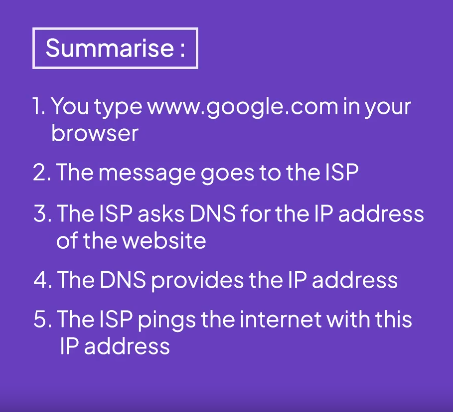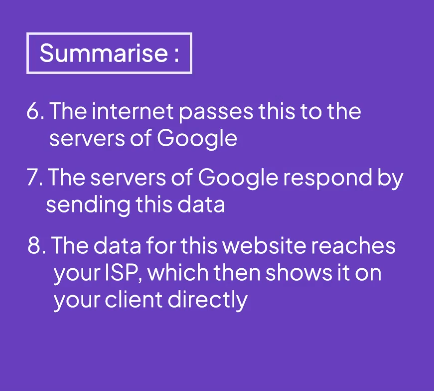Tech for PM interview Questions
 Utkarsh Hadgekar
Utkarsh Hadgekar
Question 1 : Explain DNS to a 5 year old.
Technical Definition
Domain name system translates human friendly domain names (like example.com) into IP addresses (like 192.0.2.1) that computers use to identify each other on the internet.
when you type a web address like, google.com your computer needs to find the ip address associated with that domain name (google.com) to connect to that website, your computer sends the request to a DNS server to find the IP address associated with that domain name.
The DNS server checks its database. If it has the IP address, it returns it to your computer. If not, it asks other DNS servers until it finds the answer.
Once the IP address is found, it returns to your computer and connects you to the website.
Answer:
Imagine the internet is like a giant library, and every website is a different book. But instead of book names, each website has a "number" (called an IP address) that tells your computer exactly where to find it.
DNS is like a magical librarian. When you ask for a book by name—like asking for a book called "Cartoon World"—the magical librarian (DNS) knows where that book is stored by looking up the special number. Then it tells your computer where to go to find it.
So instead of remembering all those numbers, you just say the name, and DNS helps you find it!
Question 2 : Explain how internet works


before that you need to know about what is internet ?
internet is a medium where you would get every information present in the world.
internet also connects computers, phones, and other devices so they can talk to each other, share information, and let people use things like websites, apps, and email.
steps:
When you want to use the internet (like when you go to a website), your device (computer, phone, etc.) connects to the internet through an Internet Service Provider (ISP), like AT&T or Comcast. This ISP is like the “entrance” to the internet.
Every website has a name, called a domain name (like
example.com), and a specific number called an IP address. When you type a website name into your browser, it asks a Domain Name System (DNS) server to find the matching IP address.Once the IP address is found, your request travels across multiple networks around the world. These networks are like highways, and they are connected by huge cables and other technology that allow information to move at super high speeds. Routers along the way help direct your request to the right place, like road signs telling data which way to go.
Your request finally reaches the server that holds the information for the website you wanted. The server sends the information (like a webpage or video) back to your device along the same kind of path through the networks.
Once the data reaches your device, your browser (like Chrome or Safari) takes that data and shows it as a webpage you can read, images you can view, or videos you can watch.
Question 3 : Explain APIs
An API (Application Programming Interface) is like a messenger that lets different software applications talk to each other and share data or functionality.
Its bascially a medium of communication between two software applications.
Here’s how it works:
Request: One app (like a weather app) sends a request to another (like a weather database) asking for specific information, like the current temperature in a city.
Processing: The API takes this request and goes to the other app’s database to find the answer.
Response: The API then brings the data (the temperature) back to the weather app, which displays it for you.
The common operations which API perform are CRUD (Create, read, Update, Delete)
Question 4 : How does Google Maps compute ETA
Google Maps computes the Estimated Time of Arrival (ETA) by combining several data sources and complex algorithms.
Google Maps first looks at the distance between your starting point and destination and considers the speed limits on each road along the route.
Google collects real-time traffic data from GPS signals in phones and cars on the road. This data helps Google understand how fast or slow traffic is moving at any moment.
Google has years of data on traffic patterns based on time of day, day of the week, and even specific holidays. If it’s rush hour, Google can estimate that traffic will be slower based on past data.
Google considers road conditions (like construction, road closures, or accidents) that may impact the travel time, using information from government reports, local authorities, and user reports.
Google uses machine learning to analyze all of this data and continuously improve its ETA predictions. The algorithm learns from previous trips to make future ETAs more accurate.
Subscribe to my newsletter
Read articles from Utkarsh Hadgekar directly inside your inbox. Subscribe to the newsletter, and don't miss out.
Written by

Utkarsh Hadgekar
Utkarsh Hadgekar
An Innovative Software Developer with a specialization in backend development. Learning about DevOps. A Crypto Enthusiast.